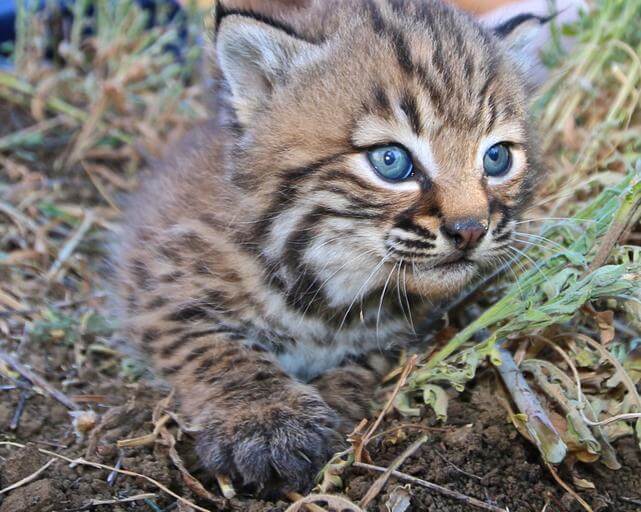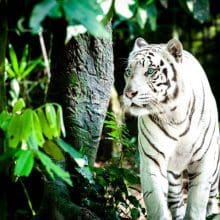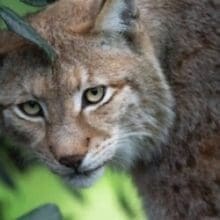Exploring the Evolutionary Transition: 5 Insights into Bobcats’ Origins from Eurasian Lynx
Insights into Bobcats
Untamed Beauty: Unveiling the Enigmatic World of Bobcats
The bobcat, scientifically known as Lynx rufus, is a fascinating and elusive creature that roams the wild landscapes of North America. With its distinctive tufted ears and short tail, the bobcat has captured the curiosity of researchers and wildlife enthusiasts alike. While the bobcat is native to North America, its evolutionary origins can be traced back to the Eurasian lynx, a larger and more widely distributed species. In this article, we will delve into the evolutionary transition of bobcats from Eurasian lynx and explore five key insights that shed light on their origins.
1. Genetic Similarities
Genetic studies have revealed striking similarities between bobcats and Eurasian lynx, providing strong evidence of their shared ancestry. Research conducted by Dr. Warren E. Johnson and his team at the National Cancer Institute’s Laboratory of Genomic Diversity compared the DNA of bobcats and Eurasian lynx. The results showed a high degree of genetic similarity, suggesting a common evolutionary history.
Furthermore, the study found that bobcats and Eurasian lynx diverged from a common ancestor approximately 1.7 million years ago. This divergence occurred during the Pleistocene epoch, a time of significant climatic changes and the emergence of new habitats.
2. Morphological Adaptations
Insights into Bobcats: While bobcats and Eurasian lynx share genetic similarities, they have distinct morphological adaptations that reflect their different ecological niches. Eurasian lynx are larger and more robust, with longer legs and a more pronounced facial ruff. These adaptations enable them to thrive in the vast forests and open landscapes of Eurasia.
On the other hand, bobcats have a smaller and more compact body structure, which allows them to navigate through dense vegetation and rocky terrains. Their shorter legs and smaller size make them well-suited for hunting in the diverse habitats of North America, including forests, deserts, and grasslands.
3. Geographic Distribution
The geographic distribution of bobcats and Eurasian lynx provides further insights into their evolutionary transition. Eurasian lynx have a much broader range, spanning across Europe, Asia, and parts of the Middle East. In contrast, bobcats are primarily found in North America, with their range extending from southern Canada to Mexico.
This divergence in geographic distribution can be attributed to the geological and climatic changes that occurred during the Pleistocene epoch. As the ice sheets advanced and retreated, the land bridges connecting North America and Eurasia intermittently formed and disappeared. These fluctuations in connectivity limited the gene flow between bobcats and Eurasian lynx, leading to their distinct evolutionary paths.
4. Ecological Interactions
Studying the ecological interactions between bobcats and Eurasian lynx provides valuable insights into their evolutionary transition. In areas where their ranges overlap, such as the boreal forests of Canada, researchers have observed competition and niche partitioning between the two species.
For instance, a study conducted by Dr. John F. Benson and his team at the University of Nebraska-Lincoln found that bobcats tend to occupy habitats with more fragmented landscapes, while Eurasian lynx prefer larger and more contiguous forested areas. This spatial segregation allows both species to coexist by minimizing direct competition for resources.
5. Conservation Implications
Understanding the evolutionary transition of bobcats from Eurasian lynx has important implications for their conservation. The genetic similarities between the two species highlight the need to protect the genetic diversity of bobcats, as it represents a valuable reservoir of genetic information inherited from their Eurasian ancestors.
Furthermore, the study of their ecological interactions can inform conservation strategies aimed at preserving both bobcats and Eurasian lynx. By identifying key habitat requirements and promoting landscape connectivity, conservationists can ensure the long-term survival of these iconic feline species.
Summary
Insights into Bobcats: The evolutionary transition of bobcats from Eurasian lynx is a fascinating journey that spans millions of years. Through genetic studies, morphological adaptations, geographic distribution, ecological interactions, and conservation implications, we have gained valuable insights into their origins.
By understanding the shared ancestry and unique adaptations of bobcats and Eurasian lynx, we can appreciate the remarkable diversity of the feline family. Moreover, this knowledge can guide conservation efforts to protect these magnificent creatures and the ecosystems they inhabit.
Read More About Bobcats From Wikipedia




